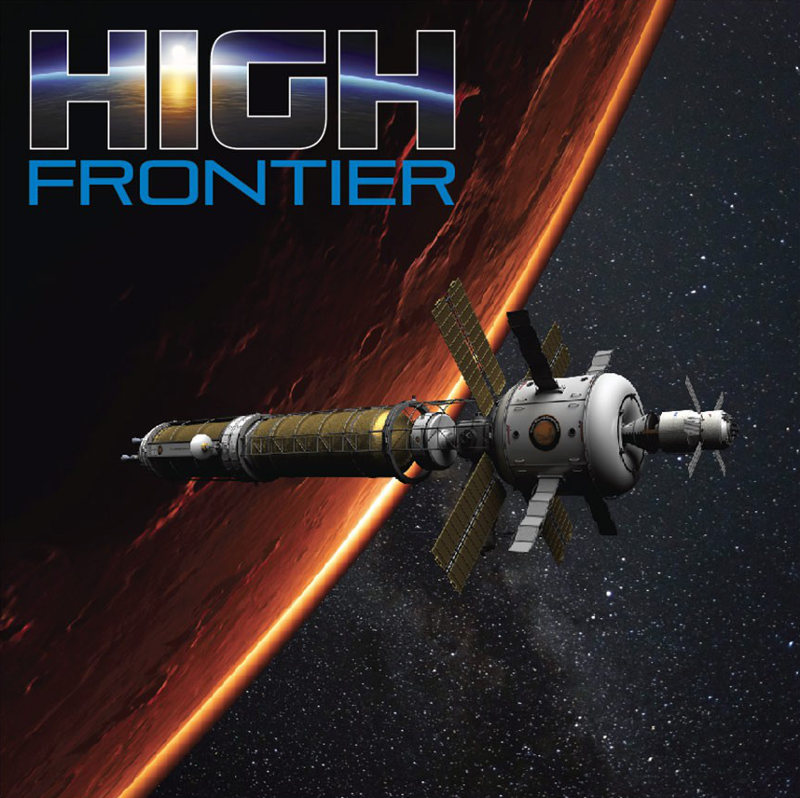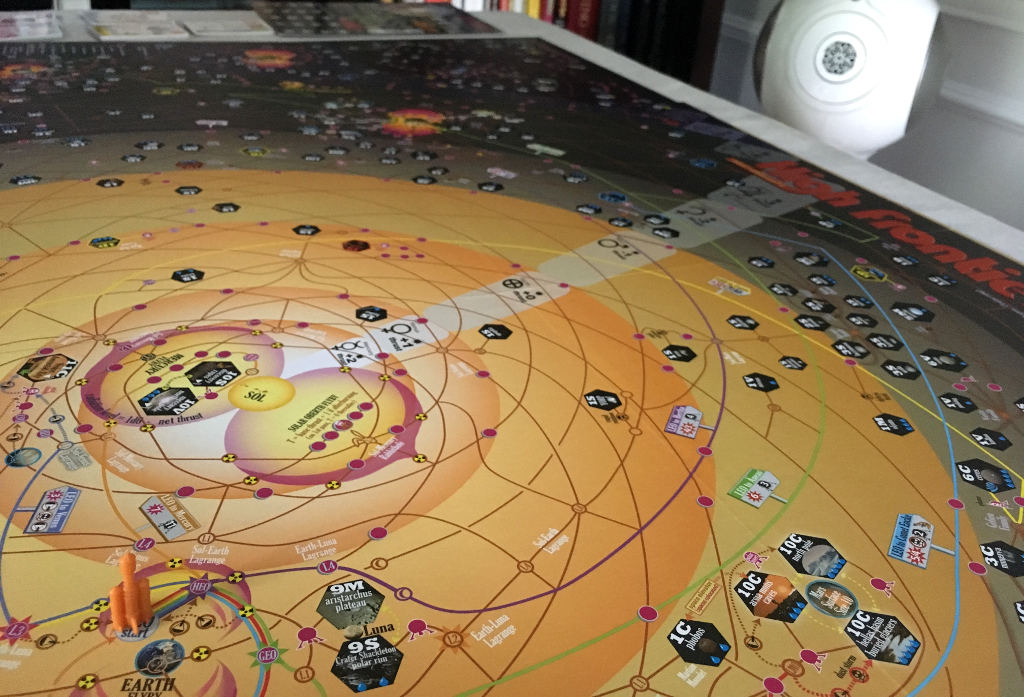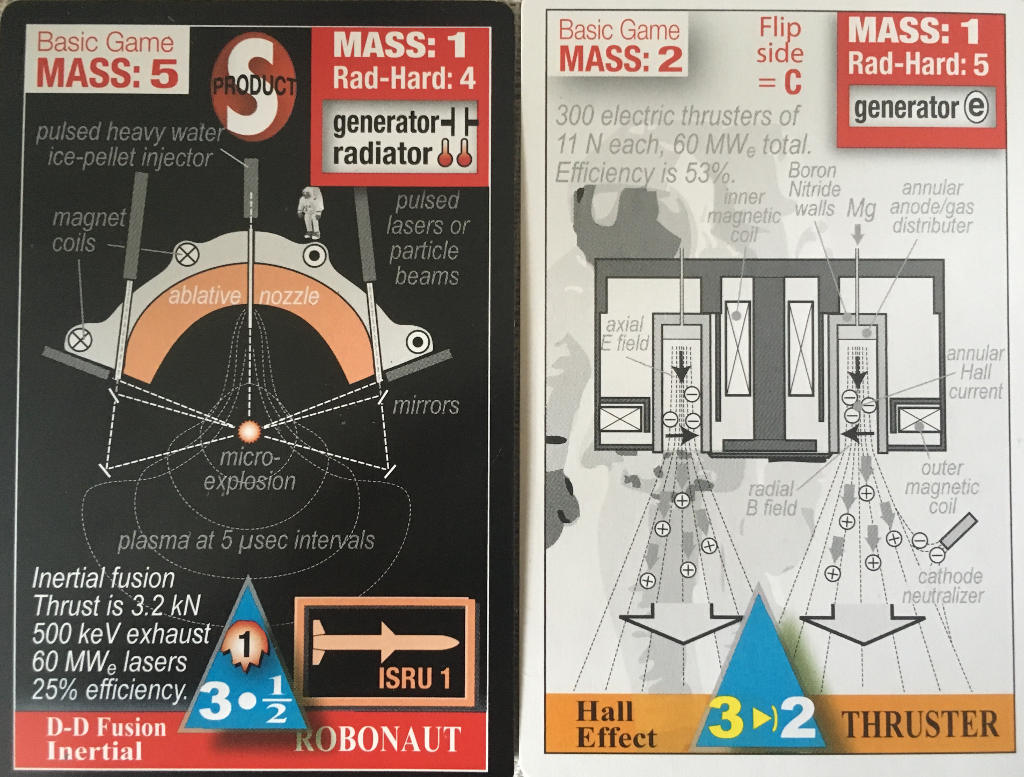 What kind of game could accurately replicate orbital mechanics around the entire solar system while providing a robust economic and political simulation of the next few centuries? The answer turns out to be "a very large one".
What kind of game could accurately replicate orbital mechanics around the entire solar system while providing a robust economic and political simulation of the next few centuries? The answer turns out to be "a very large one".
High Frontier is a Phil Eklund game. Eklund is the designer of many incredibly ambitious gamesSee also Origins: How We Became Human, many of which seem so complex that the goal seems not to win based on forethought and strategy but rather to enjoy seeing how the simulation plays out over an afternoon. I'm down with that, and so is my friend Nigel who owns a copy of this amazing game.
Luckily Nigel had studied the rules beforehand and played a few turns solitaire to get a grip on the rules since there is a lot packed into the large box. The playing board itself is the most impressive thing I have seen in a board game, representing the entire solar system, including all the planets, major moons, a decent selection of asteroids, with the odd comet chucked in for variety.

Navigating the map is an exercise in itself - players will quickly familiarize themselves with Hohmann transfer orbits, Lagrange points, and the best places to perform burns to boost their rockets into new orbits. The board is a schematic of the routes around the system, the orbit you are in is more important than your absolute position. It is possible to get almost anywhere in the solar system with very little fuel if you are prepared to wait long enough but most people will want to launch with enough fuel to perform a few burns to get to their destination in a reasonable time.
Building your rocket is done by auctioning and trading cards representing technologies for a few turns at the start of the game until you feel that you have a decent combination of thrusters, remote sensors, and factories. Here is where the strategy starts to take shape - do you opt for heavy boosters that can catapult huge manufacturing plants into the outer system, or for a lighter loadout for a more modest mission? As always, the problem is carrying enough fuel to get to where you want to go.

The goal for the first mission is to land somewhere with a decent shot of containing resources, and build some of the advanced technologies that can only be manufactured away from Earth. These usually give you the ability to push further into the solar system.
In our game, I got saddled with a relatively heavy and inefficient rocket but managed a fairly credible mission to some carbon rich asteroids outside the orbit of Mars, which allowed me to build some handy nanobots for further exploration. Nigel got off the ground a turn earlier and claimed some metallic rocks a little further away. All the metal was put to good use upgrading his entire technology stack but he ran into trouble a few turns later when his rocket blew up during a tricky landing on a comet. Such is life, but even that wasn't a fatal blow, his faction can always launch another rocket from Earth.
After about 3 and a half hours I managed to fulfill the end condition and win the game. But we hadn't even explored a fraction of the huge map and we were only playing the most basic version of the rules - the real version includes off-world colonies, warfare, a politics track, and a timer that simulates the Sun's 12 year sunspot cycle. And there is also a set of advanced rules for those whom even this isn't enough. And then (no joke) a super advanced rule set that will eventually see you start to expand across interstellar space to nearby stars!
You kind of know what you are getting into when you first see the board - High Frontier is a complex game. But it plays fast enough once you get going, and the time just flew by. There was not a lot of interaction between the players once we got off Earth to do our own thing, but it was never boring.
The curious can check out the High Frontier 3rd Edition Living Rules.